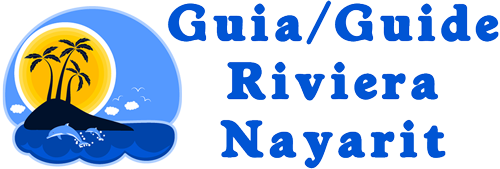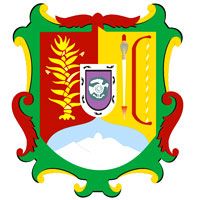NAC and Glutathione Powerful Antioxidants | How to Take NAC CORRECTLY
CCMray • June 28, 2024 • 0 views
Chapters
00:00 - Intro
0:47 - Why it's Used?
1:30 - How NAC Works?
2:08 - NAC Antioxidant Journal
2:55 - Insulin, Fertility, PCOS
3:56 - NAC Dose?
4:55 - Glutathione Recycling
What is NAC? NAC and Glutathione.
NAC or N-acetyl cysteine, is an amino acid that helps the body create and use protective antioxidants. Along with two other amino acids — glutamine and glycine — NAC is necessary to make and replenish glutathione. And while NAC is considered ‘conditionally essential’ because your body can produce it from other amino acids. It really only becomes essential when the dietary intake of methionine and serine is low.
NAC Journal of Antioxidants
►https://www.mdpi.com/2076-3921/10/6/967
How Much NAC to Take? N-Acetylcysteine.
Now, there isn’t a daily requirement of NAC that you must be getting from your diet, but getting higher amounts may benefit some people. While you can find cysteine, which is a sulfur-containing amino acid in foods like chicken, turkey, garlic, and eggs. NAC is found only in supplements.
What NAC Good for? NAC and Glutathione.
NAC has been used for about three decades now as a mucolytic agent for respiratory conditions as it works great to loosen thick mucus in pneumonia and bronchitis, but also used for reversing acetaminophen toxicity. But nowadays, people take it to reduce inflammation, insulin resistance, infertility due to PCOS and more.
How NAC Supplements Work? NAC and Glutathione.
But how does NAC work is the real question. Well its all about turning on what called the “the mother of all antioxidants.” or the “master antioxidant Glutathione. Which helps make DNA, helps break down nutrients, regulates our immune responses, and protects against oxidative stress. In The body, NAC converts to l-cysteine, a nonessential amino acid. But then, The body uses l-cysteine to make glutathione, which is a tripeptide or chain of amino acids, cysteine, glycine, and glutamic acid.
NAC Dosage? What Dose of NAC and Glutathione?
Now when it comes to dosing, a common dose of NAC is anywhere from 600–1,200 mg per day. You can find strengths of 500-, 600-, 750- and 1,000-milligrams. However, its important to discuss with your doctor to see if you are a right candidate for NAC and to get the precise dose that may be better suited for you.
Glutathione Redox Cycle. Glutathione Recycling.
And another important factor to consider that is often missed is the fact that you got two types of glutathione and there specific enzymes. You got reduced glutathione (GSH) and oxidized glutathione (GSSG). Glutathione peroxidase triggers the reaction of glutathione to oxidized glutathione, which is when the glutathione “takes the hit”, takes the damage to protect the cell basically. Then you have, Glutathione reductase, which then triggers the conversion of oxidized glutathione back to usable glutathione. This is known as glutathione recycling.
And there are about 5 nutritional compounds that support glutathione recycling pathways. L-glutamine, selenium, cordyceps, gotu kola, and milk thistle which also increases superoxide dismutase.
NAC for PCOS, Ovulation, Fertility
Recent studies have shown that a combination of CC and NAC considerably increased both ovulation and pregnancy rates in women with CC-resistant PCOS. and that “treatment of hyperinsulinemic patients by NAC was found to tailor control parameters of glucose in them and consequently, their insulin levels and peripheral insulin sensitivity were reduced and increased, respectively.
► https://www.ncbi.nlm.nih.gov/pmc/arti...
Do You Need NAC?
And now that Amazon was able to re-list NAC products as of August of last year, many wonder if its even worth taking. If youre presumably already healthy, it is unlikely to have a deficiency in the production of glutathione. You can make an argument for it if you have a poor diet, or you have increased biological needs from lets say recovery from exercise.
DISCLAIMER:
This video is for information only and should not be used for the diagnosis or treatment of medical conditions. Dr. Arsalan Aspires has used all reasonable care in compiling the information but make no warranty as to its accuracy. Always consult a doctor or other healthcare professional for diagnosis and treatment of medical conditions.
00:00 - Intro
0:47 - Why it's Used?
1:30 - How NAC Works?
2:08 - NAC Antioxidant Journal
2:55 - Insulin, Fertility, PCOS
3:56 - NAC Dose?
4:55 - Glutathione Recycling
What is NAC? NAC and Glutathione.
NAC or N-acetyl cysteine, is an amino acid that helps the body create and use protective antioxidants. Along with two other amino acids — glutamine and glycine — NAC is necessary to make and replenish glutathione. And while NAC is considered ‘conditionally essential’ because your body can produce it from other amino acids. It really only becomes essential when the dietary intake of methionine and serine is low.
NAC Journal of Antioxidants
►https://www.mdpi.com/2076-3921/10/6/967
How Much NAC to Take? N-Acetylcysteine.
Now, there isn’t a daily requirement of NAC that you must be getting from your diet, but getting higher amounts may benefit some people. While you can find cysteine, which is a sulfur-containing amino acid in foods like chicken, turkey, garlic, and eggs. NAC is found only in supplements.
What NAC Good for? NAC and Glutathione.
NAC has been used for about three decades now as a mucolytic agent for respiratory conditions as it works great to loosen thick mucus in pneumonia and bronchitis, but also used for reversing acetaminophen toxicity. But nowadays, people take it to reduce inflammation, insulin resistance, infertility due to PCOS and more.
How NAC Supplements Work? NAC and Glutathione.
But how does NAC work is the real question. Well its all about turning on what called the “the mother of all antioxidants.” or the “master antioxidant Glutathione. Which helps make DNA, helps break down nutrients, regulates our immune responses, and protects against oxidative stress. In The body, NAC converts to l-cysteine, a nonessential amino acid. But then, The body uses l-cysteine to make glutathione, which is a tripeptide or chain of amino acids, cysteine, glycine, and glutamic acid.
NAC Dosage? What Dose of NAC and Glutathione?
Now when it comes to dosing, a common dose of NAC is anywhere from 600–1,200 mg per day. You can find strengths of 500-, 600-, 750- and 1,000-milligrams. However, its important to discuss with your doctor to see if you are a right candidate for NAC and to get the precise dose that may be better suited for you.
Glutathione Redox Cycle. Glutathione Recycling.
And another important factor to consider that is often missed is the fact that you got two types of glutathione and there specific enzymes. You got reduced glutathione (GSH) and oxidized glutathione (GSSG). Glutathione peroxidase triggers the reaction of glutathione to oxidized glutathione, which is when the glutathione “takes the hit”, takes the damage to protect the cell basically. Then you have, Glutathione reductase, which then triggers the conversion of oxidized glutathione back to usable glutathione. This is known as glutathione recycling.
And there are about 5 nutritional compounds that support glutathione recycling pathways. L-glutamine, selenium, cordyceps, gotu kola, and milk thistle which also increases superoxide dismutase.
NAC for PCOS, Ovulation, Fertility
Recent studies have shown that a combination of CC and NAC considerably increased both ovulation and pregnancy rates in women with CC-resistant PCOS. and that “treatment of hyperinsulinemic patients by NAC was found to tailor control parameters of glucose in them and consequently, their insulin levels and peripheral insulin sensitivity were reduced and increased, respectively.
► https://www.ncbi.nlm.nih.gov/pmc/arti...
Do You Need NAC?
And now that Amazon was able to re-list NAC products as of August of last year, many wonder if its even worth taking. If youre presumably already healthy, it is unlikely to have a deficiency in the production of glutathione. You can make an argument for it if you have a poor diet, or you have increased biological needs from lets say recovery from exercise.
DISCLAIMER:
This video is for information only and should not be used for the diagnosis or treatment of medical conditions. Dr. Arsalan Aspires has used all reasonable care in compiling the information but make no warranty as to its accuracy. Always consult a doctor or other healthcare professional for diagnosis and treatment of medical conditions.

























